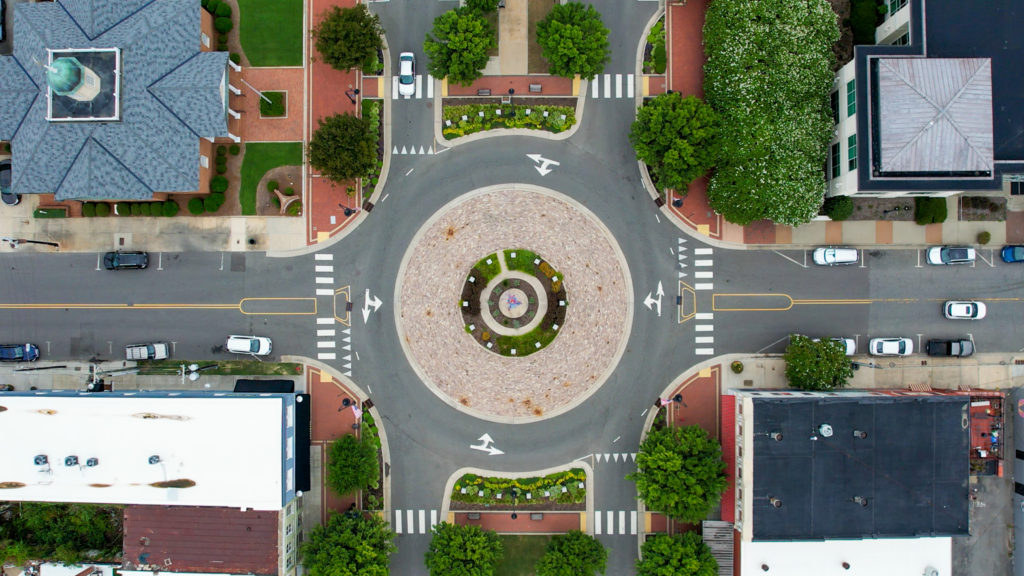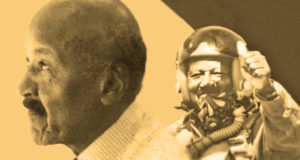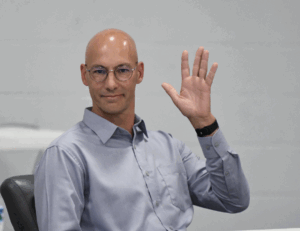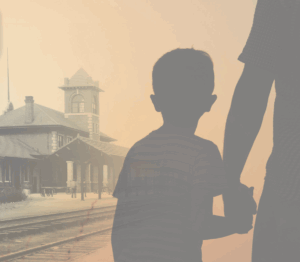
Downtown next
It’s a late February evening in 2007 and an urban designer is addressing the Goldsboro City Council as a crowd of more than 100 local residents listens in.
And as she shows off a series of drawings — sketches of what the city’s core could look like should the board adopt her Downtown Goldsboro Master Plan — “oohs” and “aahs” fill the second-floor conference room inside City Hall.
There was the park that used to run down the middle of Center Street — an expanse of green lined with bushes, flowers, and towering trees.
There were water features.
And, perhaps most importantly, there were people — lots of people — utilizing the city’s core in a throwback to a bygone era when seemingly everything happened downtown.
“It’s easy to say, ‘This could never happen here,’” she says. “But it can.”
Fast forward nearly two decades.
Allison Platt, now a longtime Goldsboro resident, no longer has to officially pitch anything to members of the City Council.
Her Master Plan was adopted and, over time, realized in ways she always imagined it could.
Sure, there are still vacant buildings, and the revitalized residential district has not yet been realized, but many of Wayne County’s youngest citizens — and the Seymour Johnson Air Force Base personnel who have been stationed at the Goldsboro installation in recent years — have no memory of a time before Center and its surround streets were bustling.
From coffee shops, an antique store, boutiques, and restaurants to apartment buildings, salons and a brewery, downtown’s offerings draw nearly every demographic.
And that’s not including those who converge on the fountain, veterans memorial, or art alley to start Graduation Day, Prom Night, Sweet 16s, or wedding celebrations with the perfect photoshoot.
But Platt is quick to remind those enjoying the fruits of more than 17 years of labor that it almost didn’t happen.
“What I remember is there were those six to eight people who were just discontent with everything and they’re, by the way, in every city where I’ve worked,” she said. “But they were so vocal, they went to see the council people and the council started to think, ‘Well, maybe people really don’t want this.’”
And were it not for former Downtown Goldsboro Development Corp. Executive Director Julie Metz rallying supporters of the plan, what county residents and tourists alike have come to enjoy over these last few years likely would not have existed.
“She rounded up every person who mattered in Goldsboro and brought them to that meeting and the council people all went, ‘Yes,’” Platt said. “It might not have happened otherwise.”
•
This week, nearly 1,000 visitors from across North Carolina will converge on downtown for the annual N.C. Main Street Conference — to both see how far Goldsboro has come since the plan was adopted back in 2007 and to learn from successes and failures experienced along the way.
But for Platt and Erin Fonseca, the DGDC’s current leader, their presence means more than a chance to receive pats on the back.
It’s an opportunity for local leaders and downtown stakeholders and advocates to realize they need to finish what they started.
“I think it’s a kick in the ass for us. It’s like, OK. We were celebrating the last time they were here and saying, ‘Look what we just did.’ And now, they’ll see the growth, but for us, it’s a time to refocus and remember what we’re capable of,” Platt said.
Fonseca agreed.
“I think it’s a way to kind of re-energize the downtown development effort, and it also acts as a visual reminder of why downtown development matters,” she said. “For the community to see all of these visitors from across the state coming in to learn what we’ve done in downtown Goldsboro and the growth we’ve seen from it, I just think that’s a shot in the arm for the rest of the community to get behind downtown development.”
Because in reality, there is still more work to be done.
For Platt, the two pieces of the puzzle that have yet to be placed are residential development and the restoration of Union Station.
“I would love to check those off and those are some really big checkmarks to make,” she said.
And while she acknowledged that there are “a lot of dynamics we don’t control with that,” recent developments — from the city and county agreeing to match privately raised funds to stabilize the building to federal and state governments opening the door, once again, for potential passenger rail service returning to Goldsboro — have brought the dream of a bustling train station back to the fore.
“Goldsboro is sort of in a middle place. It’s not on the coast and it’s not really within driving distance of Raleigh. But if we get the railroad back and reborn a little bit, I think it would change the dynamics in a huge way,” Platt said. “I think it would be the lynchpin for Goldsboro being able to support itself.”
Fonseca took it a step further.
“We need to look at Goldsboro Union Station as the hub for our future development,” she said, adding the Arts Council of Wayne County and View at Wayne National’s proximity to the station, combined with a restored depot, could encourage people to fill in the gaps between them. “There’s a lot of work being done to drive activity to the station, and it’s all based around Union Station being an anchor.”
Residential development would be in the mix in that area, too, as Virginia Street has become a focal point since the DGDC shifted its philosophy on how best to realize the goal of more people living is the historic district.
“It’s really challenging to look at the historic neighborhood as a whole. It’s much easier to focus in on certain areas and try to make progress in one and then move to another,” Fonseca said. “We found that, perhaps, scale and scope is more significant as far as moving the needle than focusing on one house at a time. So, if we can help stand up an organization that has the capacity to acquire multiple properties and rehab them in a way that is consistent with what our historic neighborhoods require, we should identify those entities and get behind them.”
But it will take a vision — and a city willing to incentivize potential investors — to begin to turn streets like Virginia into thriving neighborhoods.
“Who are the end users? Are we looking at owner-occupancy? Are we looking at someone who is going to come in and buy houses for rental inventory? Who are those people and how do we make it worth their while?” Fonseca said. “There’s a way to do it. We just have to find the right people. And I think we as a city have to be prepared to help them find a way to make it work. If we’re putting up barriers for redevelopment then we’re going to lose some of these developers.”
And Platt mentioned another place where residential development still makes sense — a location, the last two blocks of Center Street, she said back in 2007, and again last week, would be “perfect for townhouses.”
“I think people from the base or young couples would absolutely adore that,” she said. “They would have that streetscape right in front of them. They could walk downtown to restaurants.”
•
The good news for Goldsboro leaders is that the plans are already completed.
“It’s really important to be proactive, so planning is a huge piece of preparing for growth. It’s a roadmap, essentially. Without that, it’s hard to maintain priorities with changes in leadership,” Fonseca said. “It takes some really difficult decision-making at times to bring about progress and the best way to weather changes in leadership is to have a solid plan. So, that’s what we had in 2007 and we’ve gotten through a lot of changes in leadership because we’ve had that roadmap.”
And Platt believes that after a few years with leaders who had other priorities, now is the time — with a downtown-friendly City Council — to get back to the task of fully realizing a vision that has transformed the county seat’s core into a place that serves as a seemingly constant draw for people from all walks of life.
“There are a lot of really talented, really dedicated people here. But they haven’t been pulling together because that vision has kind of disintegrated over time,” she said. “When we did the first part of the work, we had a lot of really good leaders. And not to knock the last couple of years, but I think we were lacking vision and drive. I feel very optimistic now. I think the right people are in place on the council and the mayor and hopefully we’ll find a great city manager. That’s what it takes.”
They will be the ones who can set policy on, for example, vacant properties.
“There are other Main Street communities that have adopted vacant building ordinances and that is my No. 1 goal in the next year. If we can adopt a vacant building policy, we can start to turn over some of these properties and put them back into productive use. That benefits everyone,” Fonseca said. “Essentially, you have to demonstrate to the city that you are working on preparing your property for occupancy. You can’t use your property for storing junk. You can’t put brown paper in your windows. Broken windows boarded up windows, they are not a sign of progress. They don’t do any favors to your downtown. The end goal is to reduce vacancy and reduce blight. We have countless people coming in who are looking for a move-in-ready space and we just don’t have those readily available. So, the less vacancy we have, the better it is for business.”
And they can ensure downtown’s multi-million-dollar streetscape is being properly maintained — and that developers are incentivized to do business along Center and the streets the surround it.
Platt has faith that the Main Street Conference will give those who pull the levers a renewed sense of pride in all that has been accomplished — and a much-needed jolt.
After all, people like those currently serving on the City Council, men and women who remind her of former Mayor Al King and the late Chuck Allen, are why she took a chance on Goldsboro in the first place — and why she decided to make the city her home.
“That’s why I moved here. You had people like that in place,” Platt said. “The (downtown Goldsboro) project, in my whole life, it’s probably the project I’m the most proud of. But that doesn’t mean it’s perfect. So, we have to keep going. We have to move forward.”

A loaded discussion

Fighting for their lives

Goldsboro loses a giant

“I’m a flippin’ hurricane!”
Public Notices — Dec. 21, 2025

Belting it out

Legendary

Final Four!


